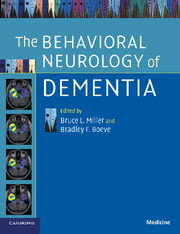Book contents
- Frontmatter
- Contents
- List of contributors
- Section 1 Introduction
- Section 2 Cognitive impairment, not demented
- Section 3 Slowly progressive dementias
- Section 4 Rapidly progressive dementias
- 23 Prion disorders and other rapidly progressive dementias
- 24 Delirium masquerading as dementia
- 25 Paraneoplastic disorders of the memory and cognition
- Index
- References
23 - Prion disorders and other rapidly progressive dementias
Published online by Cambridge University Press: 31 July 2009
- Frontmatter
- Contents
- List of contributors
- Section 1 Introduction
- Section 2 Cognitive impairment, not demented
- Section 3 Slowly progressive dementias
- Section 4 Rapidly progressive dementias
- 23 Prion disorders and other rapidly progressive dementias
- 24 Delirium masquerading as dementia
- 25 Paraneoplastic disorders of the memory and cognition
- Index
- References
Summary
Introduction
Because most dementias develop slowly, rapidly progressing dementias (RPDs) present a unique challenge to neurologists. Assessment of patients with an RPD often requires consideration of diagnoses that only marginally overlap with those for slowly progressing dementias. With the possible exceptions of dementia with Lewy bodies (DLB) and corticobasal degeneration (CBD), the disorders that commonly lead to slowly progressive adult dementia, such as Alzheimer's disease (AD) and frontotemporal dementia (FTD), rarely present as RPDs.
Since the start of the twenty-first century, our group has assessed more than 975 individuals with RPD, many of whom were referred with a suspected diagnosis of Creutzfeldt–Jakob disease (CJD). A recent review of these data show that 54% were diagnosed with prion disease (37% probable or definite sporadic, 15% genetic and 2% acquired), 28% had an undetermined diagnosis (insufficient records, although most met criteria for possible CJD), and, most importantly, 18% were shown to have other non-prion conditions, many of which were treatable. The diagnostic breakdown of these non-prion RPDs was 26% neurodegenerative, 15% autoimmune, 11% infectious, 11% psychiatric, 9% miscellaneous other, while 28% were still undetermined, often leukoencephalopathies or encephalopathies of unknown etiology (unpublished data). Differentiating prion disease from other causes of RPDs is paramount; therefore, we will begin our discussion of RPDs by focusing initially on prion disease, the prototypical RPD.
- Type
- Chapter
- Information
- The Behavioral Neurology of Dementia , pp. 345 - 366Publisher: Cambridge University PressPrint publication year: 2009



